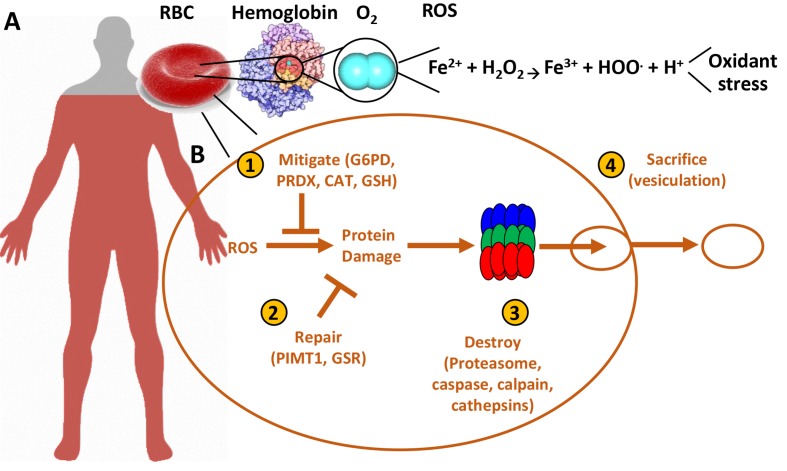Figure 1.
Oxidant stress in the red blood cell.
Red blood cells are the most abundant cell in the human body (~83% of the total human cells), and are loaded with oxidant stress-generating oxygen and iron (A). They have, therefore, developed mechanisms (B) to prevent oxidant stress-induced damage, repair the damage that is generated despite the strong antioxidant system, and degrade oxidised components through proteolytic activity or vesiculation (sacrifice) of irreversibly damaged biomolecules, including proteins and lipids.
RBC: red blood cell; ROS: reactive oxygen species; G6PD: glucose 6-phosphate dehydrogenase; PRDX: Peroxiredoxin 6; CAT: catalase; GSH: reduced and oxidised glutathione; PIMT1: protein L-isoaspartyl methyltransferase; GSR: glutathione-disulfide reductase.

